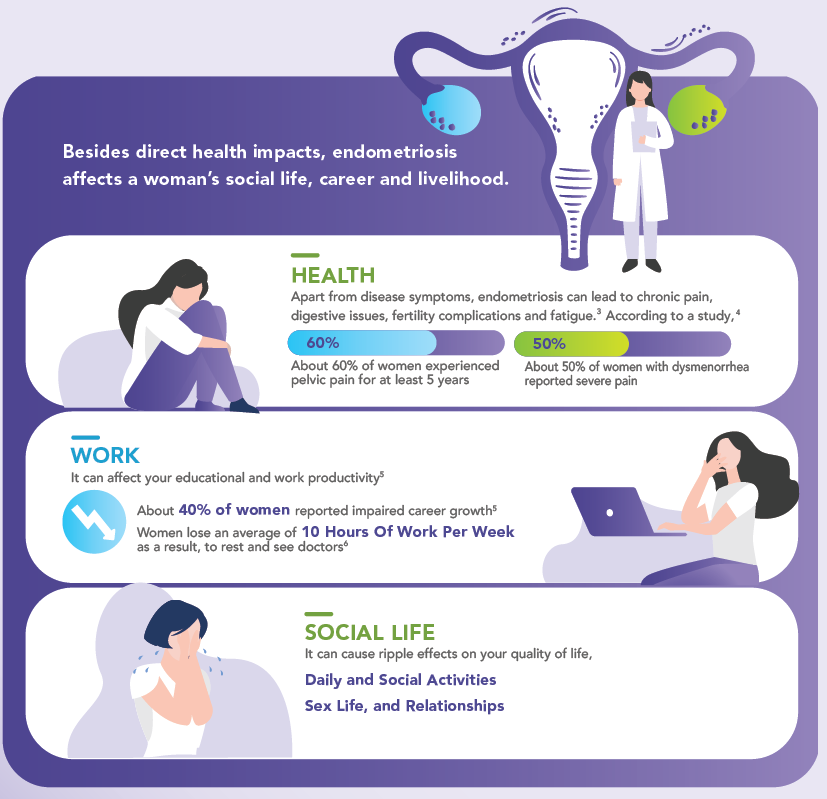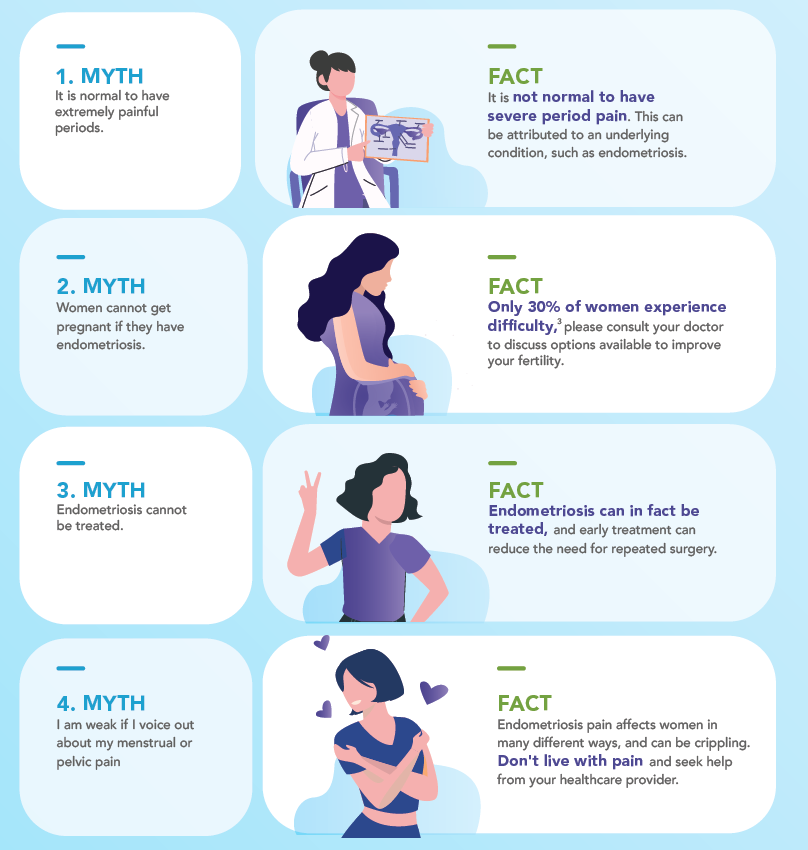share on
With up to 10% of women of reproductive age worldwide affected by endometriosis, it continues to pose a serious burden globally and in Asia.
To commemorate March 2022 as Endometriosis Awareness Month, Bayer has put together a set of consensus guidelines summarising deliberations by clinicians with expertise in the diagnosis and treatment of endometriosis in Asia, with the aim of creating awareness on clinical diagnoses and early medical therapy for patients.
Titled Clinical Diagnosis and Early Medical Management for Endometriosis: Consensus for Asia, the guidelines detail the best practices of caring for women with endometriosis.
Catherine Donovan, Vice President Head of Medical Affairs Asia-Pacific, Bayer Pharmaceuticals Asia-Pacific, said: "With up to 10% of women of reproductive age worldwide affected by endometriosis, it continues to pose a serious burden globally and in our region."
Besides imposing a negative burden on Asia’s economy due to the high costs of medical and surgical treatment, endometriosis also causes ripple effects on a women’s personal health and overall livelihood as they battle with the condition. This hinders their ability to find normalcy in their social and work life, and it takes a serious toll on their physical and mental health. The endometriosis burden in Asia is also driven by a delay in women seeking early diagnosis and treatment due to different misconceptions. For instance, women may dismiss pelvic pain as part and parcel of their menstrual cycle, while others believe that endometriosis will cause infertility.

Against this backdrop, Bayer has launched the #DontLiveWithPain campaign to encourage women to seek intervention and treatment early, instead of suffering the debilitating pain in silence with the misconception that it is normal.
This is a societal topic that affects employers and employees alike, as such we've put together key practices from the guideline to browse through. However, please note that this article does not comprise medical advice. It is only a re-sharing of Bayer's guidelines on the topic.
Excerpts from Bayer's guidelines as well as FAQs follow:
What is endometriosis?
Endometriosis is a recurring and persistent disease in women. It is characterised by the presence and growth of endometrial tissue outside of the uterus which undergoes menstrual cycle driven proliferation and breakdown. The blood produced is trapped at the site of lesion and can trigger local inflammatory reactions.
What are the symptoms?
Symptoms of endometriosis can vary and can include dysmenorrhea, noncyclic pelvic pain, dyspareunia, dysuria, dyschesia, fatigue and subfertility.
As diagnostic delays of 6–10 years are commonly reported, endometriosis can be both physically and emotionally debilitating, and significantly reduces women’s overall quality of life including negative impacts on academic performance and work productivity. Thus it places a significant economic burden for both healthcare systems and individual women as a result of costly medical and surgical treatment necessary to manage symptoms.

What is the context to these new guidelines?
The diagnosis and treatment of endometriosis has recently undergone considerable changes with an increasing focus on patient-centered care that includes more frequent clinical management, including use of questioning and imaging, and early medical treatment.
While this changing paradigm for non-surgical diagnosis and medical management necessitates consideration of how best to deliver patient-centered care, available guidelines and recommendations do not necessarily reflect current practice and the emerging evidence base, including within Asia. Therefore, the below summarises some of the consensus guidance regarding clinical diagnosis and early medical management of endometriosis within Asia.
Guidance for clinical diagnosis
To shorten diagnostic delay, clinical diagnosis should focus on symptom recognition, which can be indicative of endometriosis without laparoscopic confirmation.
- A clinical approach to diagnosis considers that endometriosis can occur without pelvic pain symptoms and that pelvic pain might be attributed to causes other than endometriosis.
- We propose focusing on the patient history and clinical examination, which can decrease diagnostic delay especially in low resource settings.
Early empiric treatment
Management of women with a clinical presentation suggestive of endometriosis should be individualised considering their presentation and therapeutic need.
- A definitive diagnosis is not required before commencing treatment in patients with pelvic pain who are not desirous of immediate pregnancy.
- The primary focus of endometriosis treatment should be the management of a patient’s presenting symptoms, and treatment should be individually tailored, accounting for patient and disease-related factors and treatment-related characteristics.
Hormonal treatment is recommended to reduce endometriosis-associated pelvic pain for patients with a non-surgical endometriosis diagnosis and no immediate pregnancy desires.
- Hormonal treatment for women with suspected or confirmed endometriosis can have a beneficial effect on pain and is not associated with a detrimental effect on subsequent fertility.
- Of the available hormonal treatments, we consider progestin only pills to be one of the first-line treatment options for early medical management of endometriosis.
Conclusion
- It is recommended that early clinical diagnosis and medical treatment of endometriosis should now be considered, including within Asia, to contribute to delivery of patient-centered care.
- A validated algorithm that utilises both of these aspects of diagnosis and treatment is not available currently.
- Based on our consideration of the available evidence, we propose an algorithm that incorporates clinical diagnosis and early medical management for endometriosis in Asia.
- Notably, further evaluation of such an algorithm and incorporation into routine practice will require consideration of its effect on diagnosis rates and patient outcomes.
Lead photo / 123RF
In-line infographics / Bayer
Follow us on Telegram and on Instagram @humanresourcesonline for all the latest HR and manpower news from around the region
share on
Follow us on Telegram and on Instagram @humanresourcesonline for all the latest HR and manpower news from around the region!
Related topics


